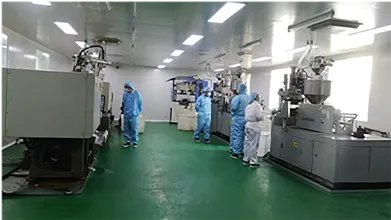https://www.wahmg.com/)">
Efficient Centrifuge Solutions for Blood Tube Processing in Medical Laboratories and Research Facilities
Efficient Centrifuge Solutions for Blood Tube Processing in Medical Laboratories and Research Facilities
Centrifuge for Blood Tubes An Essential Tool in Clinical Laboratories
The centrifuge is an indispensable instrument in clinical laboratories, particularly for the processing of blood samples. This device plays a crucial role in separating components of blood, aiding in diagnostics, treatment planning, and monitoring disease progression. Understanding the importance of centrifuges, their functioning, and their application in handling blood tubes is vital for healthcare professionals.
At its core, a centrifuge is a device that uses centrifugal force to separate substances of different densities. When it comes to blood, the primary components that are separated include plasma, red blood cells, white blood cells, and platelets. Blood collected in tubes, typically containing anticoagulants, is placed in the centrifuge. As the centrifuge spins at high speeds, the denser components, such as red blood cells, move towards the bottom of the tube, while the less dense plasma remains on top. This allows for the efficient extraction of specific components for further analysis.
Centrifuge for Blood Tubes An Essential Tool in Clinical Laboratories
Centrifuges used for blood tubes vary in design and functionality. There are fixed-angle centrifuges, where the tubes are held at a fixed angle during spinning, and swing-out centrifuges, where the tubes swing out to a horizontal position. The choice between these types often depends on the specific application and volume of blood being processed. Additionally, some advanced models feature temperature control, which is crucial for certain tests that demand stringent conditions to preserve sample integrity.
centrifuge for blood tubes

Safety is a significant concern when using centrifuges, especially in clinical settings. Blood tubes must be properly balanced in the rotor to prevent accidents. Unbalanced loads can cause excessive vibration, leading to mechanical failure or injury. It is also essential to follow biohazard safety protocols, as human blood can be a source of infectious diseases. Proper handling, disposal of waste, and decontamination of the centrifuge are paramount.
In recent years, technology has advanced to improve the usability and effectiveness of centrifuges. Automated systems are now available that allow for programmable settings and integration with laboratory information systems (LIS). These innovations reduce manual errors, increase throughput, and enhance tracking of samples, ultimately leading to improved patient outcomes.
Furthermore, with the increasing prevalence of point-of-care testing, portable centrifuges have emerged as a practical solution. These compact devices allow for immediate processing of blood samples at the site of care, facilitating quicker decision-making and treatment initiation.
In conclusion, the centrifuge is a fundamental piece of equipment in the realm of clinical diagnostics. Its role in efficiently separating blood components not only aids in laboratory analysis but also enhances the overall quality of patient care. As technology continues to evolve, so too will the capabilities of centrifuges, leading to more precise, faster, and safer diagnostic processes in healthcare institutions. Investing in high-quality centrifuges and ensuring proper training for laboratory staff is crucial to leverage this technology effectively, ultimately benefiting both healthcare providers and patients alike.
-
Wholesale Plastic Juice Bottles with Caps 16 oz Options Available Bulk Packaging SolutionsNewsJun.10,2025
-
Laboratory Apparatus Reagent Bottle – Durable & Chemical Resistant Bottles for Safe StorageNewsJun.10,2025
-
Squeezable Dropper Bottles Durable, Leak-Proof & CustomizableNewsMay.30,2025
-
Affordable Plastic Petri Plates Sterile & Disposable Lab-GradeNewsMay.30,2025
-
Eye Dropper Caps Precision 24/410 & Plastic Bottle-Compatible TipsNewsMay.30,2025
-
Affordable Mini Spray Bottle Price & Wholesale Deals Shop NowNewsMay.29,2025





















